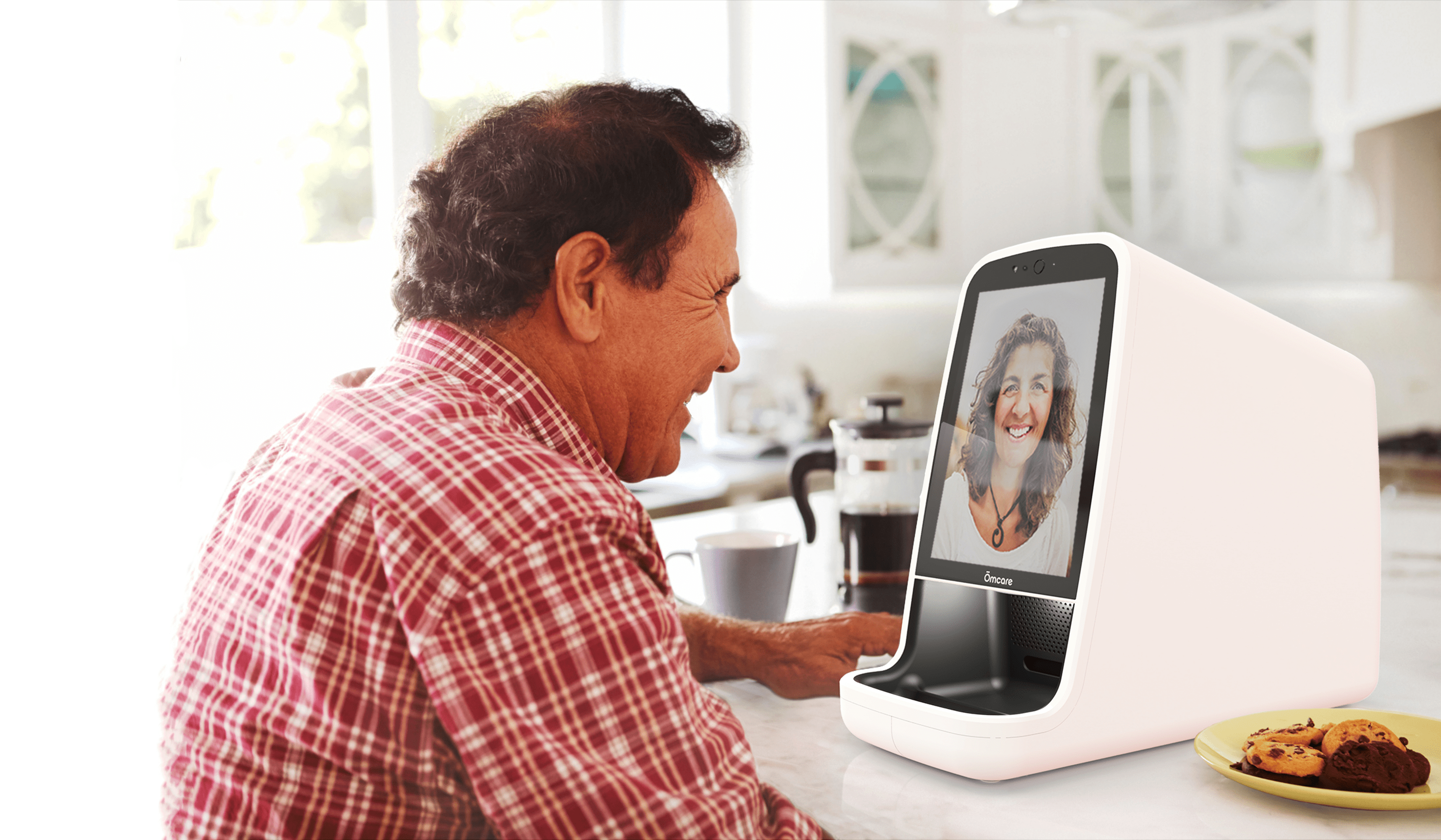Healthcare innovation startups: most successful companies of the last 10 years
Today, the healthcare startup scene is booming. With 2018 projected to be the biggest year for investing for the healthcare industry, the future appears promising as more and more groundbreaking companies emerge into the field with bold strategies for solving problems.
However, the healthcare startup landscape wouldn’t be so prosperous without the prominent startups that emerged from the earlier days and succeeded. As the list of startups continues to grow, here are seven of the most successful healthcare startups of the last 10 years.
AbbVie
Headquartered in North Chicago, this biopharmaceutical company was founded in 2013 by Richard Gonzales. Abbvie, which originated as a spin-off of Abbott Laboratories combines advanced science, expertise, and passion to solve serious health issues, which has had a huge impact on people’s lives all around the world. AbbVie currently has ~29,000 employees in over 175 countries and made $28.2 billion in revenue.
Privia Health
A physician practice management and population health technology company, Privia Health works towards keeping people healthy, preventing disease, and improving care coordination both in and outside of the doctor’s office. The private company incorporates key partnerships with employers, health systems and technology, team based-care, and a unique wellness programs to help them on their mission.
Adaptive Biotechnologies
A pioneer and leader in combining high-throughput sequencing and bioinformatics to profile T-cell and B-cell receptors, Adaptive Biotechnologies definitely belongs on this list due to their influence and work within the healthcare sphere. Their immunosequencing platform drives groundbreaking research in cancer and other immune-mediated diseases, which they hope to use to improve patient care and clinical diagnostics.
WeDoctor
Dubbed the “Amazon of healthcare,” WeDoctor is the one of the world’s leading medical health technology platforms. Based in China and founded in 2010 by Jerry Liao Jieyuan, WeDoctor works towards addressing the problem of China’s underfunded and overstretched hospitals. Currently WeDoctor has more than 150 million registered users in China for their online appointment booking, prescription, and diagnostic services. The privately held company is valued at $5.5 billion.
Moderna Therapeutics
Moderna Therapeutics works towards creating MRNA medicines for a wide range of diseases and conditions. Based in Cambridge, MA, the company uses mRNA medicines which allows them to take advantage of normal biological processes to create a desired therapeutic effect. Because of this, they can treat a broad spectrum of diseases, some of which do not have current therapies. Moderna Therapeutics was valued as high as $5B in 2017 by some analysts.
Reata Pharmaceuticals
Reata Pharmaceuticals is biopharmaceutical company that develops drugs for cancer, inflammation, and neurodegenerative diseases. Reata’s mission is to identify, develop, and commercialize novel therapeutics to address serious and life-threatening diseases with few or no approved therapies by targeting molecular pathways that regulate cellular metabolism and inflammation. Reata’s lead product candidates, bardoxolone methyl and omaveloxolone, are Nrf2 activators, which are a transcription factor for restoring mitochondrial function, reducing oxidative stress, and resolving inflammation.
Vezeeta
Vezeeta.com is the leading digital healthcare booking platform and practice management software in MENA that works towards helping the shift towards automated physician, clinic, and hospital bookings to make healthcare more accessible in the region. With over 200,000 verified reviews, patients are able to search, compare, and book the best doctors for them through Vezeeta.
Ōmcare
Our mission isn’t to capitalize on the booming healthcare market, but to push the industry’s success even further with our technology and forward-thinking philosophy. With the Ōmcare Telemed System, we are looking to tackle the problem of medication non-adherence. Of all prescriptions that are filled, 50% are taken incorrectly by the patient. Furthermore, there are 125,000 deaths each year and over $300 billion lost in healthcare costs annually.
At Ōmcare, we are driven to extend the reach of caregivers while enabling face-to-face care from anywhere. Through our technology and innovation, we are actively working towards decreasing the cost of care and empowering patients of all types. We can do what no one else has done before: deliver real medication adherence. We partner with pharmacies, payers, providers, and family caregivers to help people live a healthy, indiependent, and vibrant life no matter their situation.
To stay up to date on the latest news from us, as well as the release of our Telemed System, subscribe to our email.
Family member vs in-home nurse: pros and cons
The big decision that many families must make when it comes to taking care of an elderly family member is when is the time, if ever, to transition them to a nursing home, often called Skilled Nursing Facilities or SNFs. For some families, nursing homes are the best option when considering all the different factors, such as cost, increasing health concerns and the willingness of the elder to move out of their home into a place that is unfamiliar.
For others, the best course of action is to have your parent/grandparent continue to live in their home and have either a family member or in-home nurse take care of them. But which option should you choose? For families facing this decision, they must look at all possible scenarios to see which works best for their elderly family member and themselves, as well as the financial implications of each option.
To help you decide what route to take, here are the pros and cons to a family member caretaker vs. an in-home nurse.
Family Member Caretaker
Pros
Increased Time with Family
Many seniors experience feelings of loneliness, and by being an active participant in their life by helping take care of them, family member caretakers can help alleviate these feelings.
Decrease Expenses
By having a family member be the primary caretaker, you can avoid paying extra money for an in-home nurse, which can be quite costly, especially if you’re having trouble using insurance to help cover some of the costs.
Cons
Not Prepared for Medical Emergency
Nurses tend to be more expensive because they are providing an important service to your family member. In the case of an emergency that you are not prepared to handle, an in-home nurse is better-equipped to act fast and appropriately to any situation.
Restricted Freedom
You may take off work and free-up your schedule to give the amount of care that is necessary for the senior in your family, but it can be hard to make sure you are available no matter when to help out. There is a certain level of restricted freedom one must expect if they choose to take on the responsibility of primary caretaker, and sometimes it can be hard to make time for yourself.
In-Home Caretaker
Pros
Full-Time Care
With a nurse, you have the assurance that at all times, your family member is in safe hands. An in-home nurse’s primary responsibility is to look out and care for their patient. You’ll free up your own time, while not having to worry that no one is home to assist your loved one.
Personal Interaction
A new caregiver will allow the senior in your family to build a new relationship, which is great for improving overall happiness and the emotional well-being of your loved one.
Cons
Expensive
Nurses can be costly, and for a good reason, as the service they are providing is extremely important. However, one must always consider the cost when it comes to bringing in a full-time in-home nurse.
Finding Quality Care Can Be Hard
This isn’t as difficult as it may have been 15 years ago, as there are plenty of resources out there to help you narrow your search and find the best fit for your family member’s needs and your own. However, you do want to make sure that you find that perfect fit, which may take some time.
Consider Ōmcare to Assist in the Caretaking of Your Loved Ones
As you can see, there are many options to consider when thinking about care - in home or otherwise for the caretaking of your loved one. As you begin to explore the vast landscape, from partially-assisted to full in-home care or on your own, you’ll benefit from knowing that there are choices. No matter which option is best for your family, Ōmcare’s Telemed System offers caregivers of all types the ability to see, speak to, and confirm appropriate medication from anywhere. This new product, launching early 2019, allows you to make sure that your loved ones are taking their prescribed medicines through a video chat interface. It even dispenses the pills to ensure they receive the right pill at the right time. When you can’t physically be there to take care of your loved one, Ōmcare still gives you a chance to be there for them.
Connect with us by subscribing to our email and stay up to date on the latest product releases and news from Ōmcare.
Aging in place 101: a not-so-obvious list of top caregiver resources to try out
The work of a caregiver is never-ending. Strong resources are key to empowerment for both the caregiver and those they are caring for. And while some caregivers are just coming to learn about the effort that goes into supporting and empowering those individuals who are aging in place, others have been a formal caregiver for most of their lives. Whatever the stage, today there are a wide array of organizations and resources working to both support and recognize the work of caregivers. A foundational understanding of the caregiver tools and resources landscape can be a helpful first step to supporting the aging in place process, and for others, a good reminder too of who can truly help.
In-Home Assessment
Literally starting at home is often the best place to start. From emergency contact lists to outlining the many items related to ongoing maintenance and repair of the home, the details that need managing in addition to the caretaking of the individual themselves is yet another thing for caregivers to consider.
AARP
offers a free Home Guide Kit that includes worksheets, tips and resources (sometimes with meetings in your state) as a way to sort thru the many items on the caretaker to-do list, when staying at home is a priority.
New to the market is a well-known Best Buy. The services from electronics innovator has been refined for seniors through the new
Best Buy Assured Living
offering. Included is an extension of the blue shirt team – referred to as Advisors. Members of the Advisor team can:
- Assess caregiving needs and help determine what's right for your family.
- Walk individuals through the benefits of Assured Living, including tools and support from the experts at Mayo Clinic and UnitedHealthcare.
- Act as your personal guide
- Be another trusted resource to make living at home easier and more comfortable through the use of technology.
Organizations for Hire In-Home
The coalescence of organizations surrounding the caregiver and the individual in need of support and empowerment is growing. Today, these entities focus on assisting those who assist others while offering the sort of one-to-one care so many are seeking:
- BrightStar Care grew out of the vision and idea that entrepreneur Shelly Sun in 2002 from one location in Gurnee, IL and today offers franchise locations across the country for in-home care and medical staffing. A deep menu of offerings underneath the categories of personal, transitional and skilled nursing care, are available to aging in place individuals and their family members.
- Home Instead was started by Paul and Lori Hogan in 1994 in Omaha, Nebraska. Paul's own family experience caring led him to realize many families could use the help of an in-home caregiver. He and Lori set about creating a company to help seniors to live independently at home. Today, the network has grown to include more than 1,000 franchises around the world -- including this office in Houston, TX. Consider finding a Home Instead organization within your community.
Workplace Support You’re Already Paying For
Don’t forget the resources that are often right in front of you. Many workplaces today offer counseling, support and advisory services through their Employee Assistance Program (EAP). While the callout to the caregiver may not always be self-evident, or even an obvious menu option for all EAP’s today, it’s worth considering a call and checking into as the counseling and professional services available. As these entities often operate at the highest level in this space, providing yet another backdrop of support to you and members of your family. Additionally, they can be a good resource to a plethora of other resources.
Today, Lifeworks focuses on family as one of its 5 areas of support to employees which includes becoming a parent, child care, or caring for an older relative. While your caregiving situation is no doubt a unique one, this resource often has years of experience and staffing to help you thru your journey, wherever you’re at.
While perhaps never an easy task, supporting those aging in place can be rewarding in that is offers insight into the capabilities of others. And in the end, these are likely resources who can be a constant resource to you and your family. Sometimes filling in when you can’t assist, but other times offering the roadmap to what your role supporting aging in place looks like both now and in the future. What more might anyone ask for than that? An army of resources for aging in place at your fingertips, that’s a 101 lesson plan to get behind sooner rather than later.
E Pill vs Med Minder vs GMS Med-e-lert (+ alternatives & reviews)
Medication non-adherence is a serious problem. In fact, it has been linked to many poor health outcomes, including increased hospitalizations and even death. Medication non-adherence ultimately ends up costing the US healthcare system billions of dollars each year.
If you or a loved one is having trouble remembering to take their medication, or if you’re not sure they are taking them correctly, or at all, there is technology available to combat medication non-adherence. We’re going to breakdown three options for you, as well as an alternative to consider.
E-Pill Medsmart Automatic Pill Dispenser

The dispenser is AC powered with a battery backup, and an alarm will sound when the battery is low. When it’s time to take a pill, the E-Pill Medsmart Automatic Pill Dispenser is easy to use, can hold up to 20 aspirin-sized pills at a time per compartment, and can be purchased upfront, with no monthly fees.
“My mom is 89 years old and has a lot of trouble remembering when to take her pills. With the MedSmart pill dispenser that problem has gone away. If the red light is on and the alarm is sounding she knows it is time to take her pills, if not there are no pills in the window and she knows it is not time for her pills. The only regret I have is that I didn't buy this earlier.” - via Amazon Reviews
MedMinder - Jon Pill Dispenser

The Jon Pill Dispenser’s defining feature is that it enables interconnection between the user, their family, and the caregiver. The Jon locking pill dispenser can update MedMinder’s central computer about the patient’s dosage activity, which will then be readily available online for caregivers who can also receive immediate email or text message notifications and weekly reports.
MedMinder Review
“Just want to say how awesome the med minder is! My mother has beginning dementia and AFIB, which messes with her mind and takes 74 pills a day. The MedMinder keeps her on a timely schedule which keeps her med levels more consistent. She is doing better health wise and it gives me peace of mind knowing she doing everything right when I don’t get a text or call.” - via MedMinder website
GMS Med-e-lert

GMS Med-e-lert Review
“Med-e-lert solved my mother's medicine taking problem. Before Med-e-lert, she was forgetting to take her medicine at the assigned times and would occasionally become confused and double dose since all pills were available on her old pill box. All problems solved with this product. It was easy to program and has not jammed or malfunctioned since purchasing it weeks ago. The alarm feature successfully nags Mom until she takes her medicine. I highly recommend this product.” via Amazon Reviews.
Alternative Pill Dispensers (Ōmcare Telemed System)

This product, which will be hitting the market soon, offers caregivers the ability to see, speak to, and confirm appropriate medication from anywhere. The easy-to-use Ōmcare Telemed System enables remote care and visual confirmation of right pill, right time, right person. We want your loved one to feel empowered, not monitored - giving you peace of mind, as if you were right there with them.
Features include:
- 3-way calling capabilities
- Easy, one-touch call interface for end-users
- Medication dispensing, consumption assistance and support
- Remote in-home telehealth care
- Longitudinal data with medication adherence confirmation
- EHR integration to support physician directives
- Ability to dispense multi-dose pouch packaged medication
If you’re interested in making your or a loved one’s life easier by avoiding medication non-adherence, then make sure you keep an eye out for the Omcare Telemed System. Subscribe to our email list to stay up to date on latest updates on the release of this new device!
Download your personal daily medication chart (tips & alternatives)
Managing medications is not just a daily task, in many ways it’s a never-ending one. Keeping track of what you’re taking can be managed in so many different ways, but which one is best? First, consider what works best for you. Then think about how it might work for someone else to support your daily medication charting efforts. Having the ability to share and show others the way you’re managing your daily medications can be helpful to you and your appointed caregivers. Whether your caregiver is a member of your family or a more formal resource, like a hospital staff member or home health nurse, the ability to share your daily medication chart should be considered when you review the types of charts and tools available to you.
Here are 3 medication charts to consider when managing your daily medication:
1. Paper Might Work Best for You: ePill - FREE
Charts that offer the opportunity to write down, cross off and track the medication you’re taking still works best for many individuals. It’s always easy to look at the item in front of you and put your own information into it in a way that you best understand. Plus, all of the organizing is already done because you just have to fill in the information, on the already designed grid. Unlike other tools though, paper isn’t always as easily shared, so consider who is helping you out each day and what might also be a good way to show this individual your tracking proof too.
2. Electronic Templates Offer Access for All: Best Templates - $12
Tracking your log over time can be another way to monitor the way you’ve taken your meds vs. how they were intended to be taken. Best Templates offers downloadable versions that makes sharing with other easy, in addition to having a log for yourself to review over time.
3. Apps Work Well for Many: MyMedSchedule.com - FREE
With your phone already at your fingertips, the ability to chart the medications you take can be logged and recorded easily and quickly. The MyMed Schedule app allows you to type in and then find the medication you’re taking within its data listing, making set up easy. Establishing reminders by individual medications can then happen to help ensure there’s not a crossover of taking a medication at the wrong time.
Whatever choice you might make for your personal Daily Medication Chart, a top priority remains - taking the right pill, at the right time. More and more, the medications we’re each taking have benefits of their own impacted by combination with another drug. And so tracking, charting, recording and then sharing the information is more important than ever.
The Ōmcare Telemed System will be available in early 2019 enabling remote medication adherence assistance which will put an end to paper charts and reminder apps. Sign up to our email list to receive more information on availability and system features.






